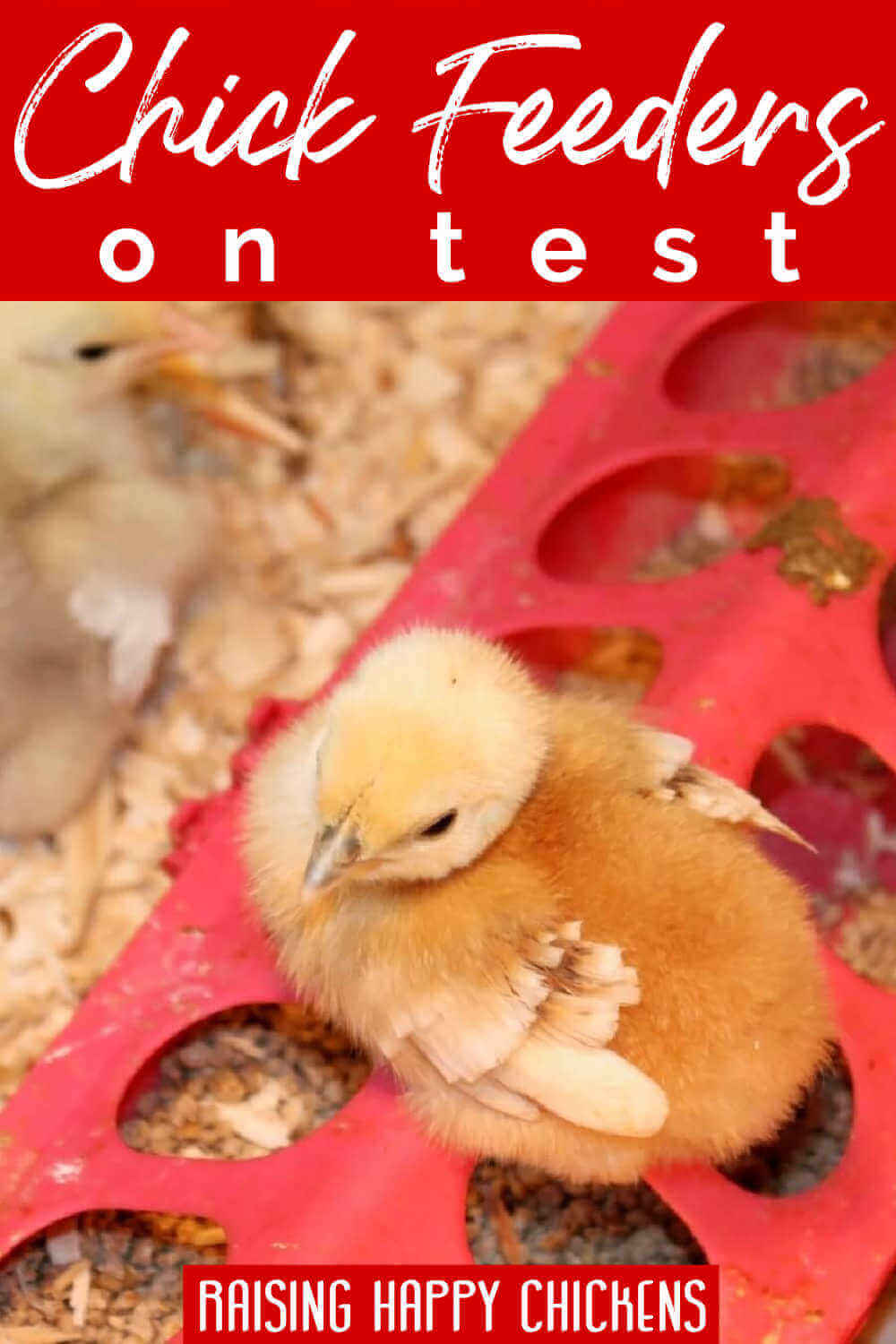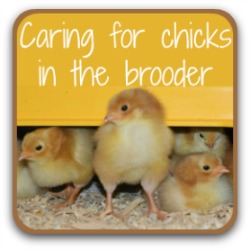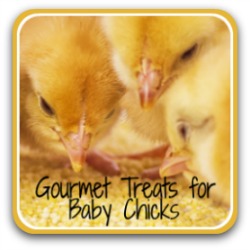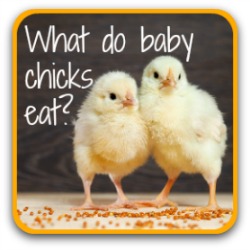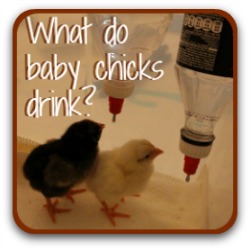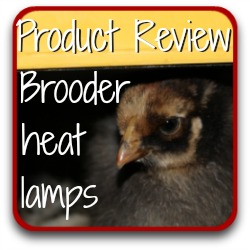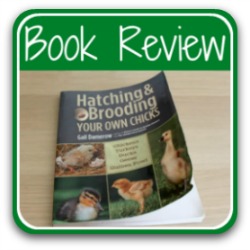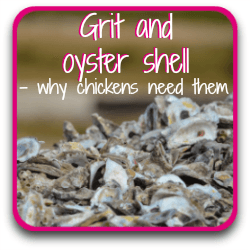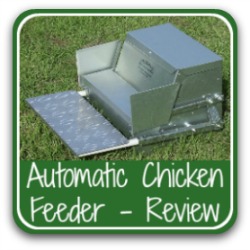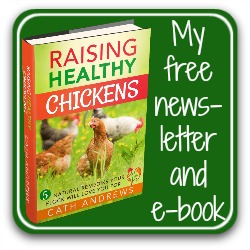- Home
- Chicks in the Brooder
- Feeders
Chick feeders: four of the best on test.
Baby chicks are messy. They tend to kick their food all over the place – and poop into their feeders and waterers.
That is wasteful – and expensive.
So which chick feeder will work best in your brooder when it comes to feeding them efficiently whilst eliminating waste and saving money?
When first in the brooder, chicks are best left with food sprinkled on the brooder floor.
That way, they learn to react to the sound of crumbs dropping, which is what a mother hen would teach them, and to distinguish between food and bedding.
But once they've got the hang of what to eat, it's time to add containers into their lives.
The problem is, chicks are messy.
They kick food everywhere, which can lead to massive waste. They climb on top of whichever feeder they're given, which leads to poop in their feed, and the need to clean it out several times a day.
So is there a solution to this in the feeders available on the market today, or is wasting grain (and therefore money) just a fact of life when raising chicks?
I've tried almost all versions of the chick feeder that I know of, some of which work better than others.
Here, I review four of the most common baby chick feeders I've used, to assess whether it's possible to prevent waste in the brooder. They are the...
If you purchase a product through links on this page, I may receive a small commission at no extra cost to you. I only recommend products I have bought (or would buy) myself, and which I believe will genuinely benefit you. You can read my full disclosure policy here.
The long, plastic feeder.
If you have more than four or five chicks, these long feeders work well. While chicks are small, they can sit side by side to eat from them. And because the holes are fairly small, it's not possible for them to climb inside the container – which they will, if they can!
It's red, the colour all chickens instinctively want to peck, so it encourages immediate feeding – once they've got used to it. And the covered top means the chicks are less able to waste feed by kicking it around.
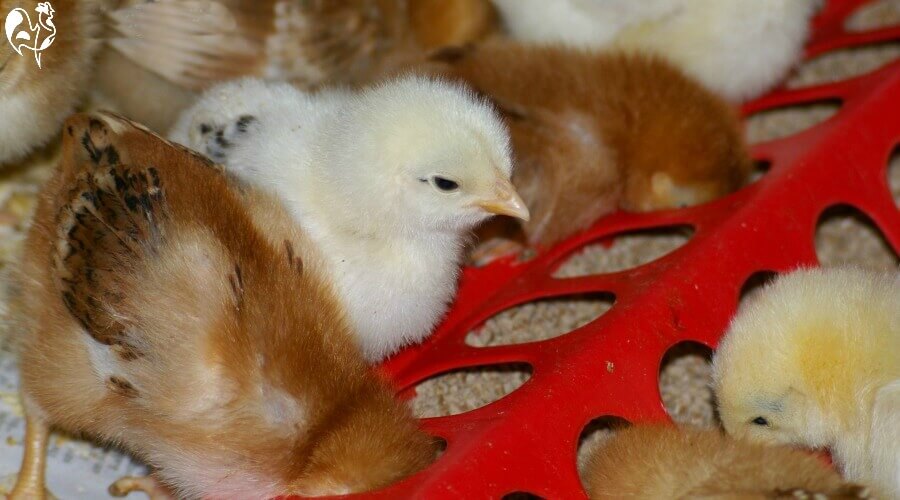 Some of my baby chicks making good use of their feeder.
Some of my baby chicks making good use of their feeder.On the less positive side, it's made of a fairly light plastic which means it can be shoved around and pushed over, wasting the feed inside.
And despite it being slippery plastic, my experience is that chicks nevertheless choose to sit on top of it. That's chicks for you!
Long plastic feeder: verdict.
- Pros: It's very inexpensive, long enough to feed a lot of chicks all at once, easy to clean and stops feed from being kicked out. And being plastic, it lasts – I've had the same one for ten years!
- Cons: It's light, so easily topples over, and chicks can (and do!) sit on top of it and poop into their food.
- Who's it good for? Great as a first feeder. But you'll need to move to something larger within a couple of weeks.
Long metal trough chick feeder.
As the chicks begin to grow, you'll find they need a larger, heavier, more accessible feeder to allow room for everyone.
My chosen feeder then is this long metal trough. Its openings are larger than for the first stage, which gives everyone a turn, and it's covered by metal bars which prevent the chicks from sitting in it.
The chicks in the pic below were two weeks old when I introduced them to my metal feeder. It took them about ten seconds to get used to it and start eating!
I bought this one at my local feed store, and I wouldn't be without it.
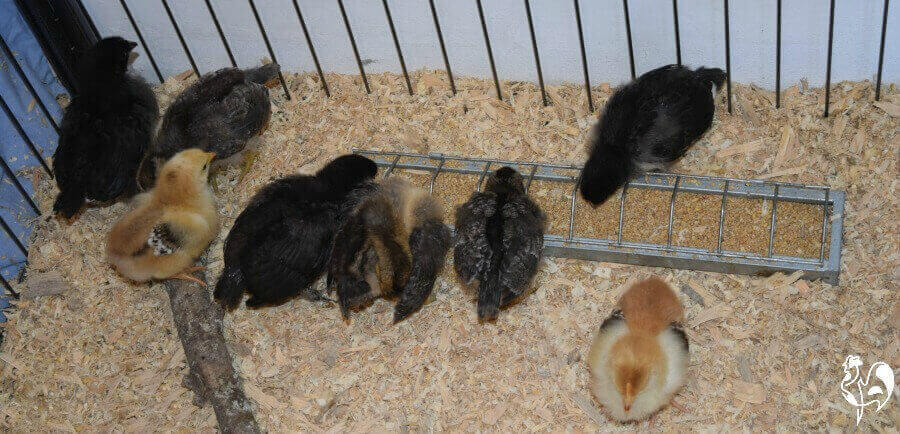
Long metal feeder: verdict.
- Pros: It allows larger chicks to feed since the gaps between bars are wider than the plastic feeder. It's sturdy and the bars are too narrow for chicks to perch and poop!
- Cons: The larger openings do allow bedding to be kicked into the feed which means it has to be cleared regularly, to stop the chicks eating their bedding.
- One way round that is using sand in the brooder, which causes less disruption as it falls beneath the grain.
- Who's it good for? If you have growing chicks this is a good option. I've used this feeder for as many as 27 chicks until they were about five to six weeks old.
- Buy one at your local feed store if possible. They're very common and likely to be a better price than online.
- If that's not possible, use the button below to buy from Amazon.
Mason jar chick feeders.
Feeders like the round one below, which are a base into which you can put your own upturned mason jar as a silo for the grain, are very popular.
They're useful because the design allows grain to disperse into the feeder as the chicks eat, so you don't need to keep topping it up every couple of hours.
I find that the holes are quite large, which gives chicks the perfect opportunity to kick grain out and bedding in.
And it's definitely better to use them with a mason jar in that large centre hole – otherwise this is what happens...
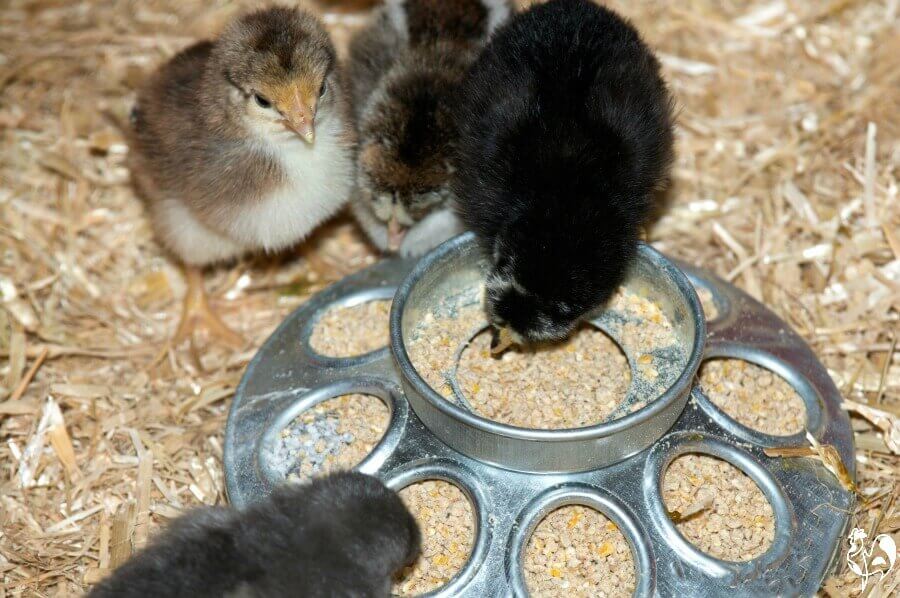
Mason jar feeder: verdict.
- Pros: Doesn't need topping up as frequently, and it's very sturdy - it won't get knocked about anything like as much as the plastic and metal trough feeders. Good for a smaller number of chicks. If you have more than ten you'll need two of these.
- Cons: It's still a ground feeder, so bedding will get kicked into the fairly large holes. And it can be hard to find a jar which fits well.
- Who's it good for? A small flock of up to ten chicks, until about four to six weeks old.
- Top tip: fill the jar with grain and put the metal base on it while the jar is still upside down – then invert it. That way, you avoid grain spilling all over the brooder as you try to fit the jar into the middle hole.
The hanging chick feeder.
First option: a simple plastic hanging feeder.
Most chick feeders are floor-based, which leads to issues with feed being kicked out of, and bedding being kicked into, the feeder – not to mention the issue of chicks pooping into the containers where they are able.
So any feeder which hangs away from the floor has to be a winner. I use a simple plastic hanging feeder in my puppy pen brooder every year. It hangs from a bar across the top of the pen.
Even very young chicks can learn how to use it – and it can be easily raised as the chicks grow.
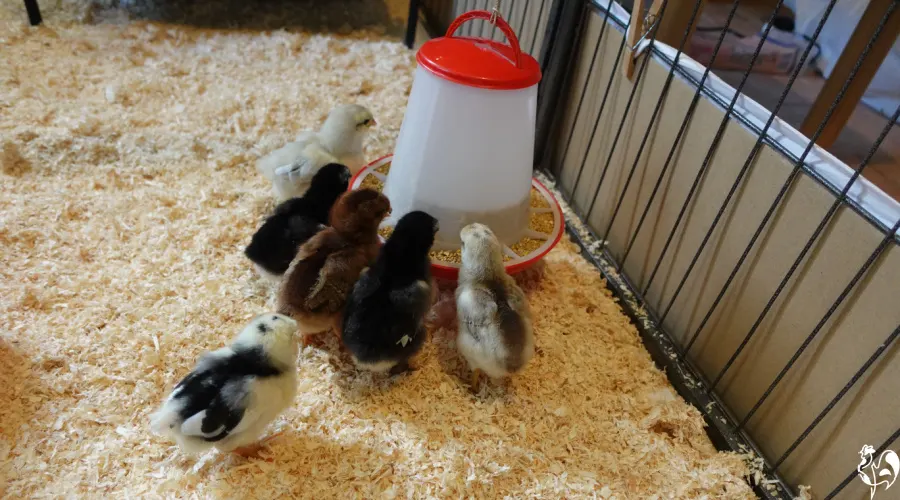 Some of my baby chicks enjoying their hanging feeder.
Some of my baby chicks enjoying their hanging feeder.I use this type of feeder for both food and water, until the chicks are ready to go outside.
Second option: a harness around a plastic feeder.
The harness straps around a plastic feeder (or waterer, but it doesn't work as well with waterers) and is strong enough then to be hung from the top of your chick brooder.
And therein lies the only issue. If your brooder doesn't have a top, it may be difficult. I get around this by placing a sturdy branch diagonally across the corner of the brooder and hanging any items from it, including treats and feeders.
Hanging feeders: hands-down the winner!
- Pros: Both these options (simple hanging feeder, or feeder with harness) keep the feeder off the ground, minimising the likelihood of chicks kicking bedding into or grain out of the feeder, so it's much more cost effective than the other feeders. The length of the strap can be lengthened or shortened to suit the height of your brooder and the size of your chickens.
- And they can be used in both the first stage (tote box) and the larger puppy pen type brooders.
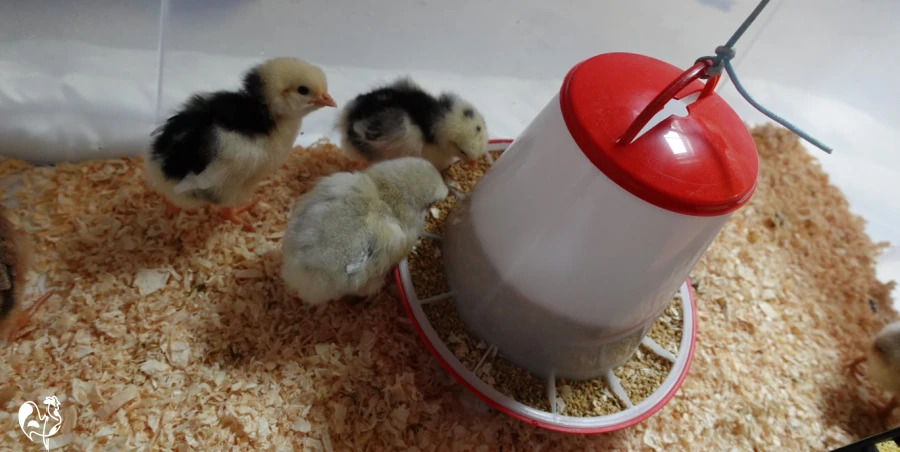 Three of my very young chicks using the simple hanging feeder in their tote box brooder.
Three of my very young chicks using the simple hanging feeder in their tote box brooder.- Cost-effective: As well as preserving feed, this design lasts. It will suit chicks from a very young age until they're old enough to leave the brooder altogether – and even after!
- Cons: There are really no cons with the simple hanging feeder. If you can find one locally, this is the way to go.
- The harness can only be used with plastic feeders and it relies on having somewhere to hang it from. And it's not as effective when used as a waterer.
- Who's it good for? Everyone!
- Top Tip: Be sure, if you order the harness, that you order the option including the plastic feeder (not waterer). That way, you can be sure the two will fit perfectly together.
More information about baby chick care.
- Home
- Chicks in the Brooder
- Feeders
